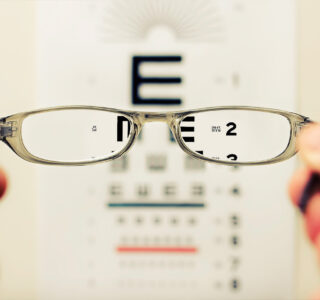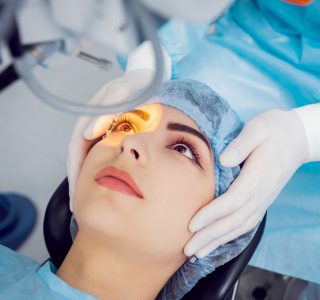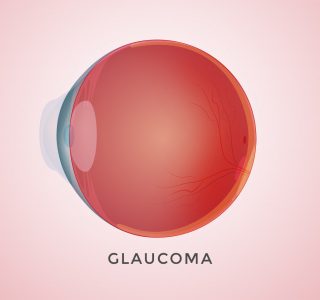Screening
Bladeless Lasik surgery, as performed with the VISX Star S4, is effective in reducing nearsightedness between –1 to –10 diopters; with astigmatism between –0.5 and 5.0 diopters; farsightness between +1.0 +5.0 diopters, with or without astigmatism up to +3.0 diopters.
i-LASIK surgery is one of the options for treating nearsightedness, farsightedness, and astigmatism; reducing or eliminating dependency upon contact lenses or glasses. There are other options avaliable for people who do not qualify for i-Lasik.
At your first consultation, you will meet your surgeon and the i-LASIK team. Through the initial eye examination and set of tests, your specific corrective needs and eligibility of i-Lasik treatment will be determined. The corneal thickness (pachymetry) and curvature are measured (topography) along with tear productivity (dry eyes), and pupil size. In most cases, your physician will be able to determine if you are a candidate, during the 1st Consultation. The 2nd Consultation includes a fully dilated exam, to insure good health of the interior of the eye and Cycloplegic refraction to evaluate the degree of true refractive error.
Contact lens wearers are asked to remove their contacts before the first exam. Depending on the type of contacts you wear, Soft or Gas Permeable, you will be required to discontinue the wear of contacts for the second exam through the surgery. As a general rule, soft contacts must be removed 10 to 14 days before the second evaluation and gas permeable lenses for two weeks or longer, depending on the total years of wear. Contact lenses can change the shape of the cornea and it is important the cornea has returned to its natural shape before the day of surgery. Please check with our office concerning how long you have worn your lenses and the type of lens, when you schedule your first consult.
Customvue / Wavescan and Basic i-Lasik
The Virdi Eye Clinic offers Customvue and “Basic i-Lasik’. Customvue is FDA approved for nearsightedness not more than –9.0 diopters with less than –3.0 diopters of astigmatism. The pupil must dilate 5mm or more in dim light to obtain sufficient data. Customvue treatment is specific to the eye under treatment. It includes information from the Wavescan System that is more individualized, as no two people are the same, no two eyes with the identical refractive error, when evaluated in finer detail share the same eye irregularities. Customvue creates a highly detail map of your corrective needs, identifying each tiny imperfection or higher order aberrations. The variable spot scanning allows for a larger treatment area, the ability to custom treat the small irregularities (higher order aberrations), giving the doctor greater flexibility to develop a more individualized corrective procedure.
Basic i-Lasik is for patients that have a pupil size less than 5mm.
Surgery
i-LASIK surgery using the VISX STAR S4 excimer laser is performed in our dedicated iLasik surgical suite at the Rock Island Location. The VISX STAR S4 laser is permanently housed at our Rock Island location. Why is this important? A fixed site gives us total control on the daily calibrations and on the sterility, temperature and humidity of the environment in which the laser is used. The cutting ability of the laser is extremely sensitive to temperature and humidity. Diligent daily monitoring assures consistent results and best possible outcomes.
Day of Surgery
On the day of surgery, you will undergo a presurgical prep, including a tablet of Valium one half hour before. You will then be escorted into the surgical suite, where you are seated in a reclining chair. A shield is placed on the eye not having the surgery at that time. Topical drops are applied which will numb your eyes. A suction ring is placed on the eye to stabilize the eye while the laser is creating the flap. The suction is then released and then a speculum is inserted between the upper and lower eyelid to prevent blinking during the surgery.
The flap is lifted away from the bed. The patient is instructed to fixate on the blinking orange light. The laser beam is focused and locked in position with the 3-D ActiveTrak tracking system. This compensates for any small eye movements, directing the laser to move in sync with your eye. If the eye movements are too large for the laser to compensate, the laser automatically shuts down until the corrective fixation is reestablished. The laser delivers short pulses of ultraviolet light to break the molecular bonds in the protein of the stroma, vaporizing microscopic amounts of tissue to reshape your cornea. The flap is then repositioned and smoothed in place. The other eye is then operated on following the same procedures.
Although the procedure is painless, some patients experience slight discomfort during the creating of the flap. After the surgery, you are escorted to a recovery room, given fifteen minutes to rest with your eyes closed before your eyes are checked and you are released.
After Surgery
After the procedure, you are asked to keep your eyes closed for four hours after you have returned home. You may experience:
Mild burning or a gritty sensation
Mild pain and discomfort for up to 3 days after surgery
Blurred vision which becomes progressively less
A mild sensitivity to bright lights or the sunlight
May notice one or more small red spots on the conjunctiva (the white part of the eye)
Glare or haloing at night, a temporary side effect
Temporary Dryness
The Good i-LASIK Candidate
If you are considering iLasik surgery, you must:
- Be 21 years of age for i-LASIK treatment of nearsightedness, farsightedness with or without astigmatism
- Your refraction has not changed by more than 0.50 diopters during the year before your pre-operative exam
- Have healthy eye free from eye disease or corneal abnormalities
- Have nearsightedness up to -10.0 diopters with or without refractive astigmatism between 0.5 and 5.0 diopters
- Have farsightedness up to +0.5 to +5.0 diopters with or without refractive astigmatism up to +3.0 diopters for i-LASIK treatment
- Have mixed astigmatism up to 6.0 diopters for i-LASIK treatment
- Be able to lie flat without difficulty
- Be able to tolerate local or topical anesthesia
- Be able to keep your eye accurately focused on the fixation light for the entire Laser surgical procedure
- Be informed of laser surgical risks and benefits as compared to other available treatments
- Be willing to sign informed consent form as provided by our physicians
i-Lasik
Frequently Asked Questions
What is i-Lasik and how does it work?
The i-Lasik procedure is one of the most precise medical procedures performed today. The surgeons now have precise tools to measure and map the uniqueness of your eyes. The 3D mapping technology literally creates a blueprint (or fingerprint) of your eye, allowing the surgeons to then custom-fit the i-Lasik procedure for each of your eyes.
The i-Lasik procedure itself is revolutionary in its use of two computer guided lasers instead of one as in earlier generations of Lasik. First the ultra-fast Intralase Femtosecond Laser, creates a thin corneal flap, which is folded back. Then the second laser, the Visx Star S4 with 3D eye tracking and iris registration, is used to correct your vision based on the exact measurements of your eye(s). The procedure takes just minutes. Patient’s experience a quick virtually painless procedure with the potential of 20/20 or better vision.
Why should I choose i-Lasik over other vision correction options?
The i-Lasik procedure is tailor made for you, your vision, and the unique characteristics of your two eyes. The 3D mapping, precise measurements, and the use of the two most advanced lasers differentiate the i-Lasik procedure from traditional bladed surgery. i-Lasik is the final frontier of Lasik since NASA approved the i-Lasik procedure for its astronauts. Additionally, the United States Military and most Law enforcement agencies have approved i-Lasik. This following a review of extensive clinical data, which shows, the use of two lasers provides superior safety and vision as compared to earlier forms of the Lasik procedure. You should rest assured there is nothing better.
Does i-Lasik hurt, can both eyes be done at the same time?
There is minimal discomfort associated with the surgery. Patients are usually aware of the creation of the protective flap. The eye is pressurized with a suction ring, which keeps the eye from moving during this process. The eyes are light sensitive may sting and feel scratchy right after the procedure. You are instructed to go home and rest for 3-4 hours. Your eyes may be a little scratchy for the first few days. Preservative free artificial tears are recommended.
Yes, both eyes can be done at the same time. There are a few conditions that may require you to have one eye done at a time.
How soon can I resume driving and return to work?
Obviously i-Lasik patients should not drive until they are confident their vision is stable. Typically, most patients are able to drive the next day, and people return to work within One to two days following their procedure.
Will I be rid of my glasses or contacts completely?
i-Lasik will greatly reduce or eliminate your dependence on glasses or contacts. Patient’s over 40 years of age may still need reading glasses. Like any medical procedure, the are no guarantees, but over 98% of our patients can pass their driver’s license test without corrective lenses.
Why is Wavefront technology so important to the Customvue i-Lasik procedure?
Until now, physicians have been forced to practice a one-size-fits-all treatment. This corrected an individual’s vision fairly well, but it doesn’t correct it precisely. It’s not tailored to each person’s blueprint (fingerprint) image of their eye. Now, with Wavefront technology, we can customize a treatment for the unique characteristics of each patient’s
eye.
How does the Customvue i-Lasik procedure affect my night vision?
Because the Customvue i-Lasik corrects the unique imperfections in each individual’s vision it is likely that night vision will be improved. In a clinical study, four times more patients were very satisfied with their night vision after the surgery. Compared to their night vision with glasses or contacts.
Halo’s – every person, whether they’ve had i-Lasik surgery or not, experiences halo’s around bright lights in the dark. It’s a normal part of vision. After treatment your halo’s may be different than before the treatment, they may be more noticeable. However, they typically will improve or return to their pretreatment level, after about three months. It is very important to keep your eyes lubricated. Studies have shown that with the new Laser technology the average patient actually experiences fewer halo’s after i-Lasik than before the treatment.
Am I a good candidate for i-Lasik surgery?
Just as glasses or contacts help you to see clearly, so does i-Lasik vision correction. But there are some guidelines:
- Age: You must be at least 21 years of age, with stable vision.
- Prescription: Must fall with-in the treatment parameters of the Laser. There is a limitation to the amount of prescription that can be treated.
- Eye health: Eyes must free of cataracts, any cornea disease (kerataconus, Fuch’s dystrophy). Certain retinal or optic nerve changes. Patient should also inform the doctor of any other conditions, including amblyopia (lazy eye), strabismus (muscle surgery). Or any active, recurrent or residual conditions that may hinder the healing. Cornea thickness is also very important in determining the type of Lasik surgery that is right for you.
- General Health: Certain health problems can disqualify you from being a good candidate. Uncontrolled diabetes, Auto-immune disease, keloid scarring or herpes zoster. Please Inform the doctor of any medications you take that compromise the immune response.
- Pregnancy: patient should not be pregnant or nursing when undergoing Lasik surgery.Hormones changes can affect the stability of your prescription, so if you are pregnant or nursing you need to wait 6 months before being evaluated.
- Contact lens: If you are a contact lens wearer you must stop wearing your soft contacts for 10 to 14 days before your consultation and surgery. If you wear gas permeable you must have them out for 4 weeks. Your lens can alter the shape of the cornea which can change your prescription and your outcome.
Virdi Eye Clinic we will provide you with a laser vision consultation at no charge.During this visit further testing is done to determine your candidacy, and any questions you may have will be answered.
How long does i-Lasik surgery last?
While the effects of i-Lasik surgery are permanent, the benefits can decrease over time. For most patients, the results of this surgery will last a lifetime. About 10-12% of patients nationwide will need an enhancement surgery because of anatomical changes to the eye/eyes.
Can you have i-Lasik surgery twice in your lifetime?
Generally speaking, there isn’t a limit to how many times you can get i-Lasik surgery during your lifetime. But that doesn’t mean you’re a good candidate for an enhancement. The main driving factor in whether or not you can have a i-Lasik enhancement is how thick your cornea is.
How much does i-Lasik cost, is financing available?
Laser vison correction is an elective procedure which is paid for by the patient. Many patient’s will pay for their procedure using their Flexible spending or Health savings Accounts. While most insurance plans don’t cover refractive surgery, more are offering discount programs for a percentage off the cost of the procedure. It is your responsibility to check with your vision plan to see if they offer any discounts. You must let the us know before your surgery or these discounts will not apply. There is an 18 months interest free financing option available. Please ask our i-Lasik coordinator, Susan Eaker, any further questions you may have on cost, discounts and financing at your consultation.















